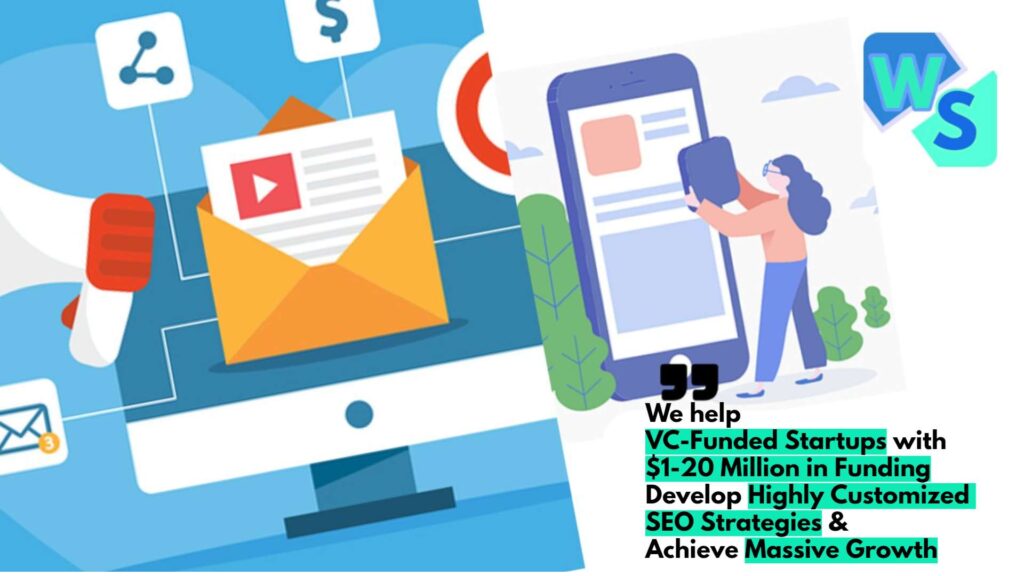Understanding Marketing Mix
Basics of Marketing Mix
When discussing the digital marketing mix, it’s crucial to first understand the foundational concept of the marketing mix. The term “marketing mix” was first introduced by Neil Borden in 1949. It refers to the set of marketing elements a firm could use to achieve its objectives, including components such as product, price, place, and promotion (DataCamp). This concept has since laid the groundwork for modern marketing theory and practice.
Phillip Kotler further refined this idea, defining the marketing mix as a “set of marketing tools that the firm uses to pursue its marketing objectives in the target market”. The traditional marketing mix is often referred to as the 4Ps:
- Product – The goods or services offered to meet customer needs.
- Price – The amount of money customers must pay to purchase the product.
- Place – The locations where the product is made available to customers.
- Promotion – The activities aimed at informing and persuading customers about the product.
For a more detailed look at these components, check out our guide on the 4ps of marketing.
Evolution of Marketing Mix
With the advent of the digital era, the traditional marketing mix has evolved to accommodate new marketing dimensions. Originally, the marketing mix consisted of the 4Ps: product, price, place, and promotion. However, the digital marketing landscape required a more comprehensive approach. Consequently, the mix has been expanded to include three additional elements: people, processes, and physical evidence. This expanded framework is commonly referred to as the 7 Ps of digital marketing.
- People – This represents both the target audience and the staff who serve customers. It emphasizes the importance of customer service and personnel in the marketing strategy.
- Processes – The methods and systems employed to execute marketing strategies efficiently. Automation tools and CRM systems are crucial in digital marketing processes.
- Physical Evidence – Tangible aspects that reassure customers of the product’s quality and service. In digital marketing, this can include website design, customer reviews, and social proof.
Here is how the elements of the digital marketing mix compare with the traditional framework:
| Element | Traditional Marketing Mix (4Ps) | Digital Marketing Mix (7Ps) |
|---|---|---|
| Product | Product | Product |
| Price | Price | Price |
| Place | Place | Place |
| Promotion | Promotion | Promotion |
| Additional Elements | – | People |
| – | – | Processes |
| – | – | Physical Evidence |
For a deeper dive into modern marketing strategies, consider exploring our articles on strategic marketing mix and marketing mix strategies.
The digital age has transformed marketing methods and expanded the range of tools and channels available to marketers. To stay competitive, businesses must integrate these additional elements into their marketing mix, adapting to changing consumer behaviors and technological advancements.
By understanding the evolution and basics of the marketing mix, business leaders can craft effective strategies tailored to their target market, ultimately driving growth and achieving their marketing objectives. For more information on how to apply these principles in practice, visit our sections on marketing mix components and marketing mix models.
Traditional vs. Digital Marketing Mix
Comparing Strategies
In understanding the digital marketing mix, it’s essential to delve into the differences between traditional and digital marketing strategies. Traditional marketing utilizes media such as TV, radio, and print media to advertise services and products. On the other hand, digital marketing leverages the internet and social media platforms to achieve its objectives.
Here’s a comparison:
| Aspect | Traditional Marketing | Digital Marketing |
|---|---|---|
| Media | TV, Radio, Print | Internet, Social Media |
| Engagement | Static | Dynamic |
| Conversions | Slower | Fast |
| Cost | More Expensive | Less Expensive |
| Targeting | Standardized | Customized |
| Tracking | Difficult | Easy |
| Results | Slow | Quick and Live |
Advantages of Digital Marketing
Digital marketing presents numerous advantages over traditional marketing:
Cost-Effectiveness: Digital campaigns generally require less budget compared to traditional advertising methods, making them more accessible for businesses of all sizes.
Target Specific Audiences: Digital marketing allows for precise targeting based on demographics, interests, and online behaviors, ensuring that the ads reach the most relevant audiences.
Adaptability: With digital marketing, businesses can track the performance of their campaigns in real time and make necessary adjustments to enhance effectiveness. This adaptability leads to better resource allocation and higher ROI.
Quick and Live Results: The internet’s nature allows for immediate feedback and conversions, contrasting with the delayed impact of traditional marketing methods. This immediacy is particularly beneficial for timely promotions or limited-time offers.
Tracking and Analytics: Digital marketing provides robust tools for tracking both qualitative and quantitative data, aiding in the fine-tuning of campaigns (Source: Simplilearn).
To understand more about the essential elements and strategies of the marketing mix, explore our articles on 4Ps of marketing, marketing mix definition, and marketing mix strategies.
Understanding these differences helps businesses to make informed decisions that align with their targets and objectives. The choice between traditional and digital marketing should be made based on one’s audience, marketing goals, and resources. For comprehensive insights into tailoring your strategy, consider our detailed guide on marketing mix development.
Components of Marketing Mix
In the realm of strategic marketing, understanding the key components of the marketing mix is essential for any CEO, CMO, founder, or business owner aiming to elevate their game. I will now delve into the core components including product development, pricing strategies, distribution channels, and promotion techniques.
Product and Development
Product development involves creating items or services that meet customer needs and align with the brand’s strategic goals. The significance of the product in the marketing mix is underscored by its role in differentiating a business from its competitors.
| Key Factors | Product Development |
|---|---|
| Customer Needs | Research and data analytics (Penn LPS Online) |
| Competitive Analysis | Tracking rivals’ activities |
| Product Lifecycle | Continuous improvement |
For a deeper dive into product strategy, visit our article on product in marketing mix.
Pricing Strategies
Pricing strategies must reflect the perceived value of the product, market demand, and competitive landscape. Effective pricing covers a range of tactics including skimming, penetration, and value-based pricing.
| Pricing Strategy | Description |
|---|---|
| Skimming | High price initially, reduced over time |
| Penetration | Low price to enter the market, increased later |
| Value-Based | Price according to customer perceived value |
For a comprehensive understanding of pricing, refer to marketing mix pricing strategies.
Distribution Channels
Distribution channels are the pathways through which products reach the end consumer. The choice of channels can significantly impact the efficiency and reach of the product distribution process.
| Channel Type | Description |
|---|---|
| Direct | Direct to consumer |
| Indirect | Through intermediaries |
| Online | eCommerce platforms |
For more detailed information, check out marketing mix distribution channels.
Promotion Techniques
Promotional activities aim to generate awareness, stimulate interest, and drive sales. Key promotion techniques include advertising, public relations, sales promotions, and digital marketing strategies like SEO and SMM.
| Promotion Technique | Example |
|---|---|
| Advertising | TV, radio, online ads |
| Public Relations | Press releases, media coverage |
| Sales Promotions | Discounts, coupons |
| Digital Marketing | SEO, SMM (Social Media Marketing) |
Explore our article on promotion in marketing mix for more insights.
By mastering these components of the digital marketing mix, businesses can craft strategies that resonate with their target audience, optimize resource allocation, and drive business growth. For further details on the subject, consider exploring related topics such as marketing mix concepts and strategic marketing mix.
The 7 Ps of Digital Marketing
The digital marketing mix is an expansion of Kotler’s traditional marketing tools. The 7 Ps of digital marketing include product, price, place, promotion, people, process, and physical evidence (Tower Marketing). This section delves into the additional elements critical for success in the digital landscape.
People and Processes
In the digital marketing context, people refer to both the target audience and the company staff. Understanding your audience is crucial for any effective marketing strategy. This involves segmenting your market and creating buyer personas to tailor messages that resonate with specific groups.
Processes refer to the workflows and procedures that ensure efficient and effective marketing operations. Streamlining processes can improve customer satisfaction and foster better internal communication. Implementing automated tools for processes like customer relationship management (CRM) can provide seamless interactions.
| Element | Description |
|---|---|
| People | Understanding target audience, segmenting market, creating buyer personas. |
| Processes | Streamlining workflows, implementing automated tools, enhancing internal communication and customer relationship management (CRM). |
Physical Evidence
Physical evidence in the digital world includes everything from website design to customer reviews and social proof. It is the tangible proof that supports the claims you make about your product or service. High-quality website design, user-friendly interfaces, and intuitive navigation are essential components of physical evidence.
Customer reviews, testimonials, and even case studies add credibility to your brand. These elements help to build trust and can significantly impact a potential customer’s decision-making process.
| Element | Description |
|---|---|
| Website Design | High-quality visuals, user-friendly interfaces, intuitive navigation. |
| Social Proof | Customer reviews, testimonials, case studies. |
| Physical Evidence | Tangible proof supporting claims about product/service. |
Product Strategy
Product strategy within the digital marketing mix involves the design, development, and continual refinement of products based on user feedback and market research. It’s essential to develop products that meet the needs and preferences of your target audience. This may also involve expanding your product line to cater to diverse customer needs and enhance user experience (Zorgle).
Effective product strategy is not only about the product itself but also about how it is positioned in the market. Strategic positioning involves differentiating your product from competitors and creating a unique value proposition that appeals to your target audience.
For more on product strategy in the broader context of the marketing mix, check out our article on the product in marketing mix.
| Element | Description |
|---|---|
| Design and Development | Creating products based on user feedback and market research. |
| Market Positioning | Differentiating product from competitors, creating unique value proposition. |
| Product Line Expansion | Offering diverse products to meet customer needs and enhance user experience. |
By understanding and integrating these additional elements into your digital marketing mix, you can create more effective and comprehensive strategies that cater to the unique aspects of the digital landscape. For further reading, you might explore the benefits and examples in the broader context of the marketing mix strategies.
Key Elements of Digital Marketing
Understanding the central components of the digital marketing mix is crucial for any business aiming for growth. Here, I will break down the essential elements that make digital marketing effective.
Search Engine Optimization (SEO)
Search Engine Optimization, or SEO, is a cornerstone of digital marketing. It aims to increase organic traffic by improving website visibility in search engine results pages (SERPs) (LinkedIn). Understanding SEO involves delving into both on-page and off-page strategies, including keyword research, meta-tags, backlinks, and page load speed. Visit our marketing mix strategies for more details.
| SEO Component | Description |
|---|---|
| On-Page SEO | Optimization of individual web pages to rank higher and earn more relevant traffic. |
| Off-Page SEO | Actions taken outside of your website to improve its position in SERPs. |
| Technical SEO | Improving the technical aspects of a website such as page speed and mobile-friendliness. |
Content Marketing
Content Marketing is critical for engaging target audiences by developing various forms of content like articles, blog posts, videos, and infographics (LinkedIn). It focuses on providing value, solving problems, and driving desired actions.
Key Content Marketing Approaches:
- Blog Posts: Informative articles that address common industry issues and offer solutions.
- Videos: Engaging visual content that can explain complicated subjects simply.
- Infographics: Visually appealing data presentations that are easy to share.
For a comprehensive look at other promotion techniques, see marketing mix components.
Social Media Marketing (SMM)
Social Media Marketing utilizes platforms like Facebook, Twitter, LinkedIn, and Instagram to connect with audiences, raise brand awareness, and drive traffic, leads, and sales (LinkedIn).
Metrics often tracked in SMM:
| Metric | Description |
|---|---|
| Engagement Rate | Measures how actively involved your audience is with your content. |
| Follower Growth | Tracks the increase or decrease in followers over time. |
| Click-Through Rate (CTR) | Percentage of audience that clicks on the content to visit your site or landing page. |
Additional insights can be found on marketing mix social media.
Email Marketing
Email Marketing involves sending emails to promote products or services, build customer relationships, and achieve marketing goals by delivering relevant content directly to recipients’ inboxes.
Components of Effective Email Marketing:
- Personalization: Customizing emails to speak directly to the recipient.
- Segmented Lists: Sending targeted emails to different segments of your subscriber base.
- Automation: Setting up automated email series based on specific triggers.
For more on how to create a mixed strategy, refer to our guide on integrated marketing mix.
Pay-Per-Click Advertising (PPC)
Pay-Per-Click Advertising is a targeted and cost-effective digital marketing model where advertisers pay when their ads are clicked, driving traffic, boosting brand visibility, and generating leads or sales (LinkedIn).
PPC Terminologies:
| Term | Description |
|---|---|
| Cost Per Click (CPC) | The amount you pay per individual click on your advertisement. |
| Quality Score | Google’s rating of the relevance and quality of your keywords and PPC ads. |
| Ad Rank | The position of your ad on a search engine result page. |
Integrating these digital marketing elements can elevate your business strategy. For examples of successful digital marketing campaigns, explore our section on marketing mix examples.
Marketing Mix Modeling
Marketing Mix Modeling (MMM) is integral for optimizing marketing investments and making data-driven decisions to drive business growth and competitive advantage. Let’s explore its importance, benefits, and the implementation process.
Importance and Benefits
Marketing Mix Modeling enables businesses to optimize their marketing investments, allocate resources efficiently, and make data-driven decisions to drive growth and competitive advantage. It helps understand how various marketing inputs impact key performance metrics like sales, market share, and profitability.
Benefits of Marketing Mix Modeling
- Resource Allocation: Optimizes the allocation of marketing budgets across different channels and activities.
- Sales and Performance Insight: Provides an understanding of the contribution of each marketing element to sales and overall performance.
- Competitive Advantage: Offers a strategic edge by improving the effectiveness of marketing campaigns.
- Data-Driven Decisions: Facilitates making informed decisions based on robust data analytics.
- ROI Optimization: Enhances the return on investment by prioritizing high-performing channels and strategies.
Implementation Process
Implementing Marketing Mix Modeling involves a series of steps to ensure that all relevant data is analyzed comprehensively.
| Step | Action |
|---|---|
| 1 | Defining Objectives: Clearly outline the goals and objectives of the modeling process. |
| 2 | Data Collection: Gather relevant data from various sources, including sales, marketing spend, and external factors. |
| 3 | Data Preparation: Clean and prepare the data for analysis, ensuring all variables are consistent and accurate. |
| 4 | Model Selection: Choose the appropriate modeling approach that aligns with the business objectives. |
| 5 | Variable Selection: Identify key variables that influence performance metrics like sales and market share. |
| 6 | Model Development: Develop the model using statistical and data science techniques to analyze the impact of each variable. |
| 7 | Evaluation: Assess the model’s accuracy and reliability, making adjustments as needed. |
| 8 | Generating Insights: Extract actionable insights from the model to guide marketing strategies. |
| 9 | Implementation of Recommendations: Apply the insights and recommendations to optimize marketing campaigns. |
| 10 | Monitoring and Iteration: Continuously monitor performance and iterate the model to improve accuracy. |
| 11 | Communication: Share the findings and recommendations with stakeholders to align on strategic decisions. |
For a more detailed breakdown, refer to our marketing mix implementation guide.
In the rapidly evolving world of digital marketing, leveraging MMM helps businesses stay ahead by understanding the holistic impact of marketing efforts across various channels. By following these steps, companies can achieve sustainable growth and excellent results. This methodology is not only crucial for strategic growth but also for optimizing resource use in a competitive market. Explore more about the importance of marketing mix and strategic marketing mix to gain further insights into efficient marketing strategies.
Crafting Successful Campaigns
Achieving success in digital marketing campaigns starts with a well-thought-out strategy. This involves setting clear goals, evaluating the performance of the campaigns, and efficiently allocating resources.
Goal Setting
Setting clear and measurable goals is crucial for any digital marketing campaign. Goals provide direction and a benchmark for success. They should be aligned with the overall business objectives to ensure that every marketing effort contributes to the bigger picture.
Common Campaign Objectives:
- Increase Brand Awareness
- Generate Leads
- Boost Sales
- Improve Customer Engagement
- Enhance Website Traffic
To measure progress, I often employ the SMART criteria (Specific, Measurable, Achievable, Relevant, Time-bound).
Campaign Evaluation
Evaluating the performance of a digital marketing campaign is essential for understanding what works and what doesn’t. This involves analyzing various metrics and key performance indicators (KPIs). Analytics tools play a key role in providing insights into target audience behavior and preferences (Forbes).
Key Performance Indicators (KPIs)
| KPI | Description |
|---|---|
| Click-Through Rate (CTR) | Measures the number of clicks on an ad per number of impressions. |
| Conversion Rate | The percentage of visitors who complete a desired action. |
| Return on Investment (ROI) | Measures the profitability of the campaign. |
| Engagement Rate | The level of engagement the campaign receives across various platforms. |
| Bounce Rate | The percentage of visitors who navigate away from the site after viewing only one page. |
Segmentation and A/B testing are powerful techniques in performance evaluation. Segmenting the audience based on demographics, interests, and behavior allows for more targeted campaigns. A/B testing allows for testing different variations to identify what resonates best with the audience.
For more insights, check out our section on marketing mix analysis.
Resource Allocation
Efficient resource allocation is vital for the success of a digital marketing campaign. This involves budgeting, manpower, and technological resources.
Resource Allocation Model
- Budgeting: Allocate funds based on the importance and expected ROI of each component within the digital marketing mix.
- Manpower: Assign specialized teams for SEO, content marketing, social media, and other key elements from the marketing mix components.
- Technology: Invest in analytics tools, A/B testing software, and automation platforms to streamline processes and enhance efficiency.
Resource Allocation Table
| Resource | Allocation (%) |
|---|---|
| SEO | 20% |
| Content Marketing | 25% |
| Social Media Marketing | 20% |
| Email Marketing | 15% |
| PPC | 20% |
Leveraging customer behavioral insights can lead to significant performance improvements, with companies outperforming peers by 85% in sales growth (Forbes). For further guidance, refer to our article on marketing mix strategies.
Employ these strategies and make data-driven decisions to ensure your digital marketing campaigns meet their objectives and drive business growth.
Real-World Examples
Examining successful businesses can provide valuable insights into the effective use of the digital marketing mix. In this section, we will explore three exemplary companies and their strategic approaches: Airbnb, Amazon, and Atlassian.
Airbnb’s Content Marketing
Airbnb’s rise to fame can largely be attributed to its innovative use of content marketing. By leveraging host guidebooks, Airbnb taps into user-generated content to enhance the guest experience. These guidebooks provide visitors with local insights and recommendations, contributing to a memorable stay and potentially leading to positive reviews, re-bookings, and word-of-mouth referrals (Adobe Business).
The strategy not only enriches the content on their platform but also fosters a sense of community and trust among users. This approach exemplifies an effective use of promotion in marketing mix, where the focus is on building relationships and enhancing user engagement rather than merely pushing sales.
Success Stories like Amazon
Amazon’s transformation from an online bookstore to one of the world’s largest brands is a testament to their dynamic and adaptable marketing mix strategies. Amazon’s strategy encompasses various elements of the marketing mix components effectively:
- Product and Development: Amazon consistently expands its product lines, catering to diverse customer needs, ensuring a wide range of choices.
- Pricing Strategies: Amazon employs competitive pricing, special offers, and subscription services like Amazon Prime to attract and retain customers.
- Distribution Channels: Amazon’s robust logistics network ensures fast and reliable product delivery, enhancing customer satisfaction.
- Promotion Techniques: Amazon’s targeted advertising, partnerships, and seasonal sales campaigns play a crucial role in driving traffic and sales.
Amazon’s strategy highlights the importance of an integrated approach to marketing, utilizing all elements of the marketing mix (CoSchedule).
Insights from Atlassian
Atlassian, an Australian software company, showcases how effective resource allocation can boost productivity and drive business growth. By focusing on skills-based resource allocation, Atlassian ensures that developers are assigned tasks that align with their strengths. Routine testing and deployment activities are automated, freeing up developer time for more strategic work (Forbes).
This approach not only enhances workforce productivity but also ensures the delivery of high-quality software solutions. It demonstrates the importance of resource optimization in the digital marketing mix, a key aspect of crafting successful campaigns. For more on resource management, read about marketing mix strategies.
By examining these real-world examples, it’s evident that an effective digital marketing mix can significantly contribute to a company’s growth and success. Explore more case studies in our detailed section on marketing mix examples.
Future Trends in Marketing
AI Integration
Artificial Intelligence (AI) is revolutionizing the digital marketing mix. AI-powered tools can predict market trends, optimize ad campaigns, and improve customer experiences through personalized content. Implementing AI-powered financial tools that track real-time data can aid in predicting shifts in demand or expenses, allowing businesses to respond quickly and effectively (Forbes).
eCommerce Growth
The eCommerce sector has seen exponential growth, with retail eCommerce sales exceeding $5 trillion globally in 2021. This number is projected to surpass $8 trillion by 2026 (Tower Marketing). For business leaders, understanding this trend is crucial to leverage the digital marketing mix for maximum impact. Emphasizing online sales channels and optimizing the user experience on eCommerce platforms can significantly enhance revenue streams and customer satisfaction.
| Year | Global eCommerce Sales (USD) |
|---|---|
| 2021 | $5 trillion |
| 2026 | $8 trillion (projected) |
Resource Allocation Strategies
Effectively allocating resources is vital for business success. High-growth companies are turning to advanced resource allocation strategies to enhance productivity and streamline operations. For example, Atlassian, an Australian software firm, has successfully used skills-based resource allocation to boost workforce productivity and ensure that developers work on tasks aligned with their strengths.
Additional strategies involve the use of cloud infrastructure, hosting services, and automation tools. Implementing these resources can facilitate streamlined operations and data-driven decision-making. Pay-Per-Click (PPC) campaigns, for instance, yield an average return of $2 for every $1 spent, making them a profitable resource allocation (Forbes).
Resource Allocation Components:
- AI-Powered Tools: For trend prediction and real-time data tracking.
- Cloud Infrastructure: Essential for data management and operational efficiency.
- PPC Campaigns: Profitable advertising strategy with high ROI.
- Skills-Based Allocation: Enhances productivity by aligning tasks with worker strengths.
For more on how to effectively integrate these strategies, visit our sections on marketing mix models and tactical marketing mix.


















